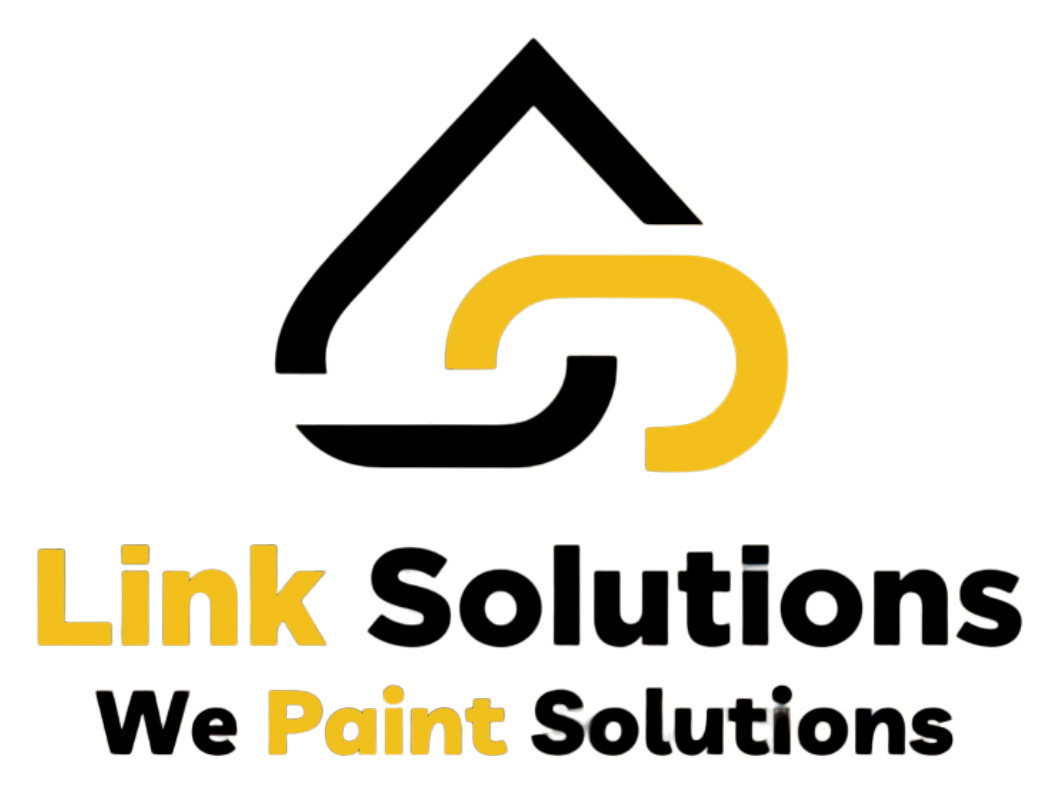Lead a commercial paint project: Taking the lead on a retail paint job is not always easy. Between maneuvering around heavy equipment, accounting for high ceilings, and working around the client’s schedule, it’s easy to feel overwhelmed! But here’s the secret – having an ironclad plan and staying organized is vital.
As a trusted Massachusetts commercial painting company, Link Solutions Painting Company has the expertise to guide you through every step of the process.
Sure, hiccups still happen once in a while. But you really can keep stress levels in check and deliver an excellent finished product if you follow some tried and true steps.
In this article, we’ll take you through how to approach a commercial paint project from start to finish. Keep reading.

Lead a commercial paint project: Develop a Plan and Timeline
Before painting can begin, you need a solid plan in place. Walk through the space and note all surfaces that need painting. Develop a project timeline estimating how long each task will take. Identify important milestones like priming day, finish coat day, and cleanup/touchup day. Build in some buffer room for unexpected delays. Share the schedule with painters, clients, and other onsite contractors to align everyone.
Choose Paints and Prepare Surfaces
Select interior and exterior paints/stains that will hold up well in a commercial setting. Consider durability, washability, and aesthetics. For repaints, determine if the existing paint is in suitable condition or if stripping/sanding is required. Patch holes, caulk cracks, scrape peeling paint, sand glossy surfaces, and wash walls/trim before painting. Address any moisture issues like leaks early on.
Lead a commercial paint project: Prime and Test Paint
Before applying finish coats, properly prime all surfaces with a high-quality primer. This promotes better adhesion and a more uniform sheen. Next, paint sample patches on walls or boards. Allow test areas to dry thoroughly, then inspect them under worksite lighting conditions. This allows you and the client to approve colors and finishes before the main work begins.
Organize Painting Supplies and Protect the Space
Stock up on all necessary painting tools and materials so work is not delayed. Lay down drop cloths in work areas and tape off any surfaces not being painted. Remove or carefully cover any furniture, equipment, outlets, and fixtures that could get painted accidentally. Close and seal doors/windows to prevent overspray or dust from escaping the work area.
Lead a commercial paint project: Ventilate the Space.
Paint fumes can be harmful in an enclosed commercial site. Set up exhaust fans and open windows (weather permitting) to keep air circulating. Alternatively, rent air scrubbers/negative air machines if VOCs are a significant concern. Ensure the ventilation setup meets local codes and run fans during and after painting.
Take Safety Precautions
Review product safety sheets so painters understand proper handling procedures and potential risks with commercial coatings. Ensure painters have PPE like respirators, gloves, goggles, and suits appropriate for the products used. Post wet floor signs if there are slip hazards. Remind the team to work safely on ladders/scaffolding and clean up spills immediately to prevent falls.
Follow Environmental Regulations
Be aware of local laws regulating VOC content in paints or adequately disposing of lead-based paint chips if stripping old surfaces. Any signage or barriers needed to contain work areas should also be in place before the painting starts.
Lead a commercial paint project: Direct the Painting Process.
With prepping done, it’s time to get painting. Maintain clear communication with the crew throughout the process. Give direction on where to start and what order to work in. Do spot checks to ensure proper coating thickness and look for drips/runs. Monitor ventilation setups and refill drop cloths as needed. Stick to the schedule as much as possible but build flexibility to account for surprises.
Touch Up and Inspect the Finished Work
At the tail end of the painting, have the crew do a thorough walkthrough to catch any final spots needing a touchup. Check edges, trim, and ceilings closely. Walk the space again under standard lighting when the paint has fully cured. Have the client inspect and address any final concerns before the painters leave the site.
Lead a commercial paint project: Clean Up the Site Post Painting
Once the coating is complete, the space should be returned to pre-paint condition. Remove all paint supplies, empty cans, trash, and debris. Carefully roll up and dispose of used drop cloths. Use paint thinner or soap and water to remove splatters/overspray from surfaces not intended to be painted. Do a final sweep to leave the area clean.
Provide Ongoing Maintenance
Implement a maintenance plan to keep your commercial paint job looking its best long-term. Address scuffs, scratches, and high-traffic areas as they occur to prevent more extensive repairs down the road. Consider having painters do periodic touchups rather than waiting for paint to show excessive wear and tear. Plan for repaints every 5-7 years or as needed based on your site’s needs.
Hire Commercial Paint Experts
For business owners and facility managers in Massachusetts looking to get their next commercial painting project done right, contact Link Solutions Painting Company. Our fully licensed and insured team has the skills and experience to handle interior and exterior painting jobs of all sizes and complexity. Contact us today for a free quote!
Google us!


